In 2014, the Zenith Type 20 Extra Special ref 03.2430.3000/21.C738 made its debut. I know this because I was at Baselworld for the launch. Hence the live photos. The Type 20 Extra Special marked a new breed of pilot watches for Zenith. An experiment by the brand to make its watches more accessible. One that proved to be short-lived. At least in its initial guise. Today, the Type 20 Extra Special collection is still a core part of Zenith’s offering. But you won’t find this specific model. It’s been long discontinued. And long forgotten. Which makes it a great buy for very reasonable money. If you can find one. Read on for the full story.
A (Very) Brief History Of Zenith Pilot Watches
The relationship between Zenith and aviation is long-standing. In fact, it stretches back longer than many watch brands have been in existence. It finds its genesis in 1909. The year French aviator Louis Blériot became the first person to fly across the English Channel. Strapped to his wrist was a Zenith watch.
Simple in its design, the watch was distinctive nonetheless. It featured a chrome-plated case with fixed lugs. A black enamel dial with Arabic numerals. Cathedral-style hands. And a large onion-shaped crown. The word “Special” appeared above the seconds sub-dial at six o’clock.
- The Zenith Pilot watch worn by French aviator Louis Blériot.
Sound familiar? That’s probably because this was the generic style for aviation watches at the time. You can find similar examples from other brands. Such as the IWC Special Pilot’s Watch from 1936. These same characteristics also inspired the design of the modern Type 20. And later the Type 20 Extra Special. Much like the original Cartier Santos did the modern-day version. Another watch worn by a famous aviator of the early 20th-century.
The Type 20 Cockpit Clock
Before pilot watches though, Zenith specialised in cockpit instruments. Among them the Type 20 montre d’aéronef. (French for “aircraft clock”.) A hand-wound clock that was introduced from 1939. These were fitted in the instrument panels in the cockpits of French aircraft. Again, we see the distinctive styling that is so familiar today. A knurled bezel was used to wind and set the watch.
In the 1960s Zenith stopped making pilot watches. Except for the Cairelli chronograph that is. But that’s a story for another day. The decision was made to focus on racing chronographs instead. Much like Rolex was doing with the Daytona. Which based on the success of the El Primero seems to have been the right call. Of course, brands like Breitling kept on with the aviation chronographs.
- An example of a Zenith Type 20 Aircraft Clock – Credit: WatchesbySJX.
This all changed in 2010, when Zenith introduced the Type 20 collection. A bold collection of pilot watches inspired by the historical models discussed above. These new models proved popular. But with in-house movements, they were also quite expensive. Zenith needed a way to make their aviation-inspired watches more accessible.
Enter the Type 20 Extra Special.
The Zenith Type 20 Extra Special
The launch of the Zenith Type 20 Extra Special at Baselworld in 2014 was an understated affair. Meaning it was easy to miss if you weren’t paying attention. Why, you ask? Well there was a prevailing theory at the time. Zenith is a centuries old watch manufacturer. Known for making high quality calibres in-house. But the new Type 20 Extra Special was not powered by one.
Instead it was equipped with a modified automatic Sellita 300 movement.
Now, I’m sure more than a few of you are reading this and thinking ‘who cares?’. After all, a lot of brands use external movements. Right? Yes, they do. Primarily from companies like ETA and Sellita. As well as a few others. It’s common practice. Especially when a brand is trying to keep the price down. Or doesn’t have the capabilities to manufacture in-house.
But the fact is, Zenith is not one of those brands. Until this point, all Pilot Type 20 watches featured in-house movements. Undoubtedly a factor in making them so attractive to collectors. But also putting them out of reach for customers who are willing and able to spend $5k+. But can’t quite stretch to $10k. Zenith recognised that there were a lot of these types of customers. And they wanted a share.
The solution was the Type 20 Extra Special. A desirable watch made more affordable. Thanks to the use of an external base movement. The so-called calibre Zenith 3000. An automatic movement offering a 42 hour power reserve. A bold move at the time and one that wasn’t without its critics.
In fact, the feedback from purists was less than complimentary. Something about betraying the values of the brand. And the like. This was to be expected though. After all the Type 20 Extra Special was not made for them.
Outsourced movement or not, the Type 20 Extra Special is a good-looking watch. The 45mm steel case is well constructed and shows a satin-brushed finish. The curved lugs are screwed-on, as is the engraved plate on the side of the case. Held in place by two blued screws, it shows the case number. The large onion-shaped crown is ideal for gripping with heavy gloves on.
What turns heads though is the design of the matte black dial. The Arabic numerals have a SLN C1 superluminova coating and really pop. No matter the lighting conditions. Same goes for the ruthenium-plated and satin-finished Cathedral hands. Also, with super bright superluminova.
Around the periphery is a white rail minute track with yellow minute markers. The colour matches the ‘Extra Special’ writing at 6 o’clock. Framing everything is a thin, mirror polished bezel. It ties in well with the applied mirror polished Zenith star at 12 o’clock.
The Type 20 Extra Special comes on a supple Nubuck leather strap with a rubber lining. It’s closed with an oversized pin buckle with Zenith star in bas-relief.
Price
Where things got interesting was the price. Retail was around USD 5,800. Which in theory should make this an attractive option. It’s a lot of watch for the money. Yet, the following year, Zenith brought out a bronze-case version. With, surprise surprise, an in-house movement. The self-winding Elite 679. That bumped the price up to USD 7,600. A notable increase.
It’s not clear whether the original Type 20 Extra Special didn’t sell well. Or whether Zenith lost its nerve and axed the external movement experiment. In any event, the Type 20 Extra Special is still a popular collection today. Albeit with in-house movements.
A Great Buy
The good news is that you pick up one of these early models for very reasonable money. Normally around USD 3,500 – USD 4,000. Assuming you don’t mind the Sellita movement of course. There’s not many of them around though. At the time of writing, Chrono24 only has six listed.
This model is not going to increase in value. But if you’ve always wanted to own a Zenith pilot watch, this could be a good way of doing it. Without having to break the bank.
Technical Specifications: Zenith Montre d’Aéronef Type 20 Extra Special ref 03.2430.3000/21.C738
- Case: Steel – 45 mm x 14.25mm – satin-finished with mirror polished bezel – screwed-on lugs – engraved caseback with Zenith flying instruments logo – water resistant to 100 metres.
- Dial: Black ‘pilot’ style dial – Arabic numerals coated in SLN C1 superluminova – centre hour, minute and seconds hands.
- Movement: Calibre Zenith 3000 – mechanical self-winding – 126 parts – 28,800 vph – 42 hours.
- Price: Discontinued / ~USD 3,500 – USD 4,000 on the secondary market.
This article by TheWatchLounge has been sponsored by our partner WatchBox.
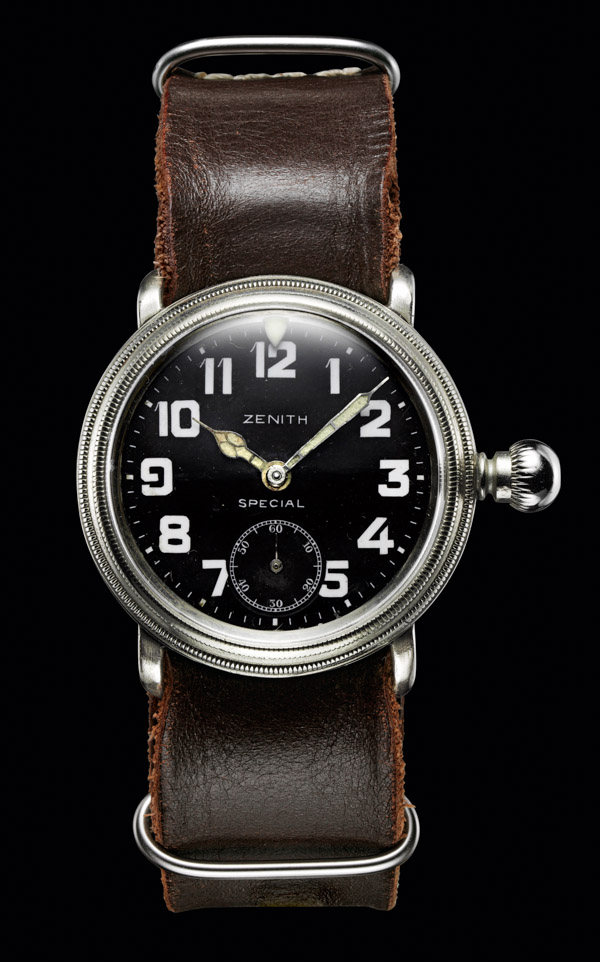
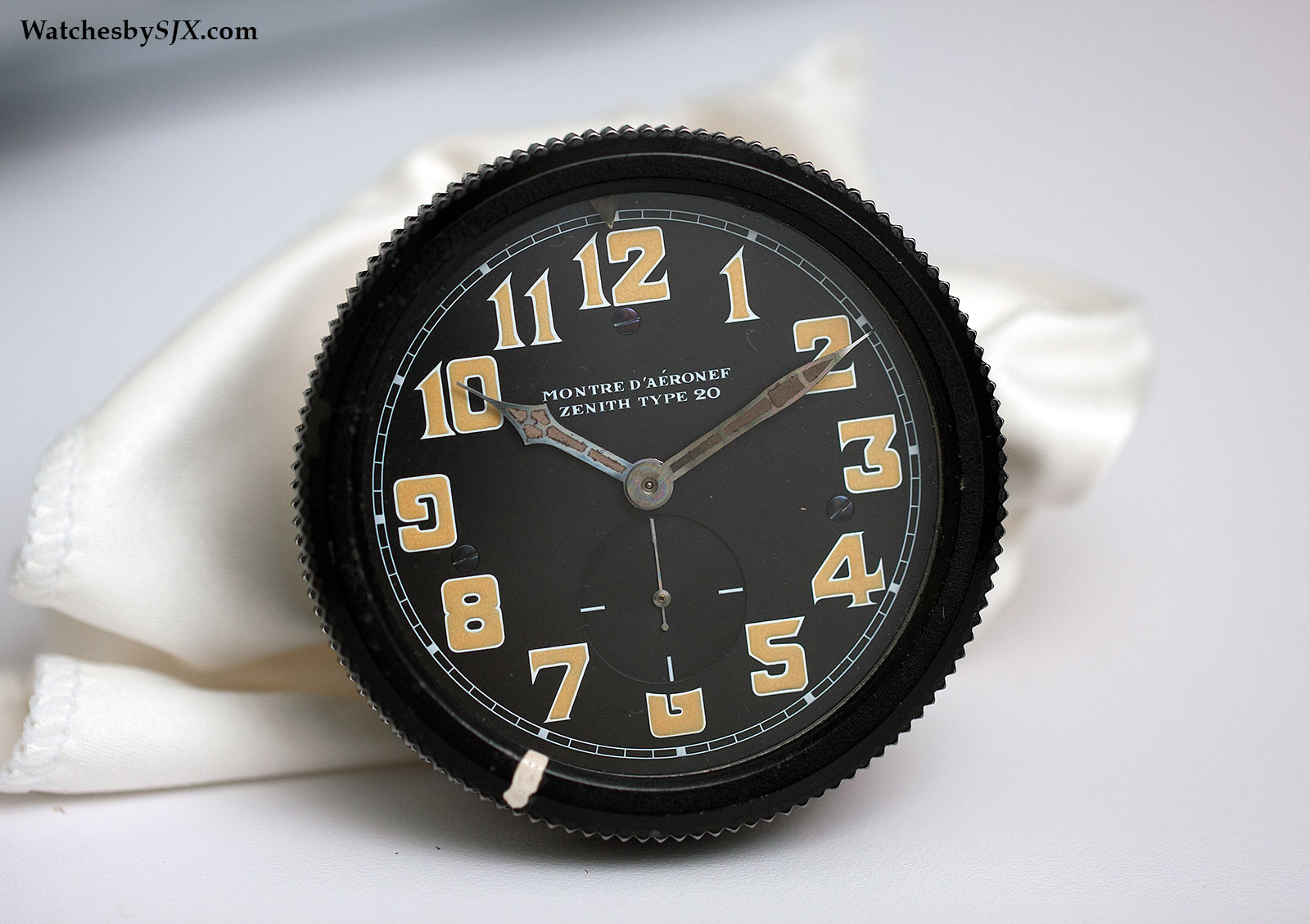
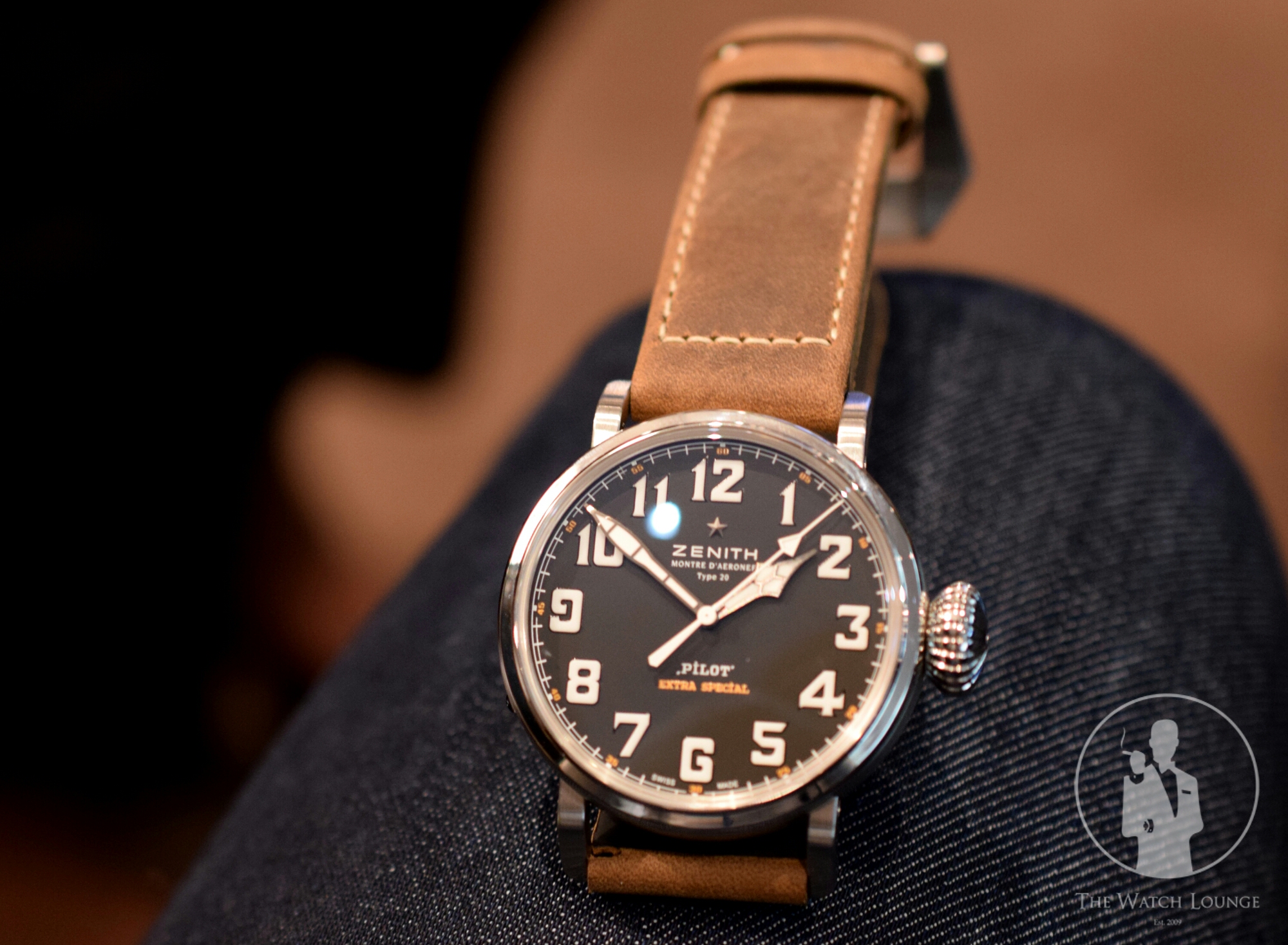
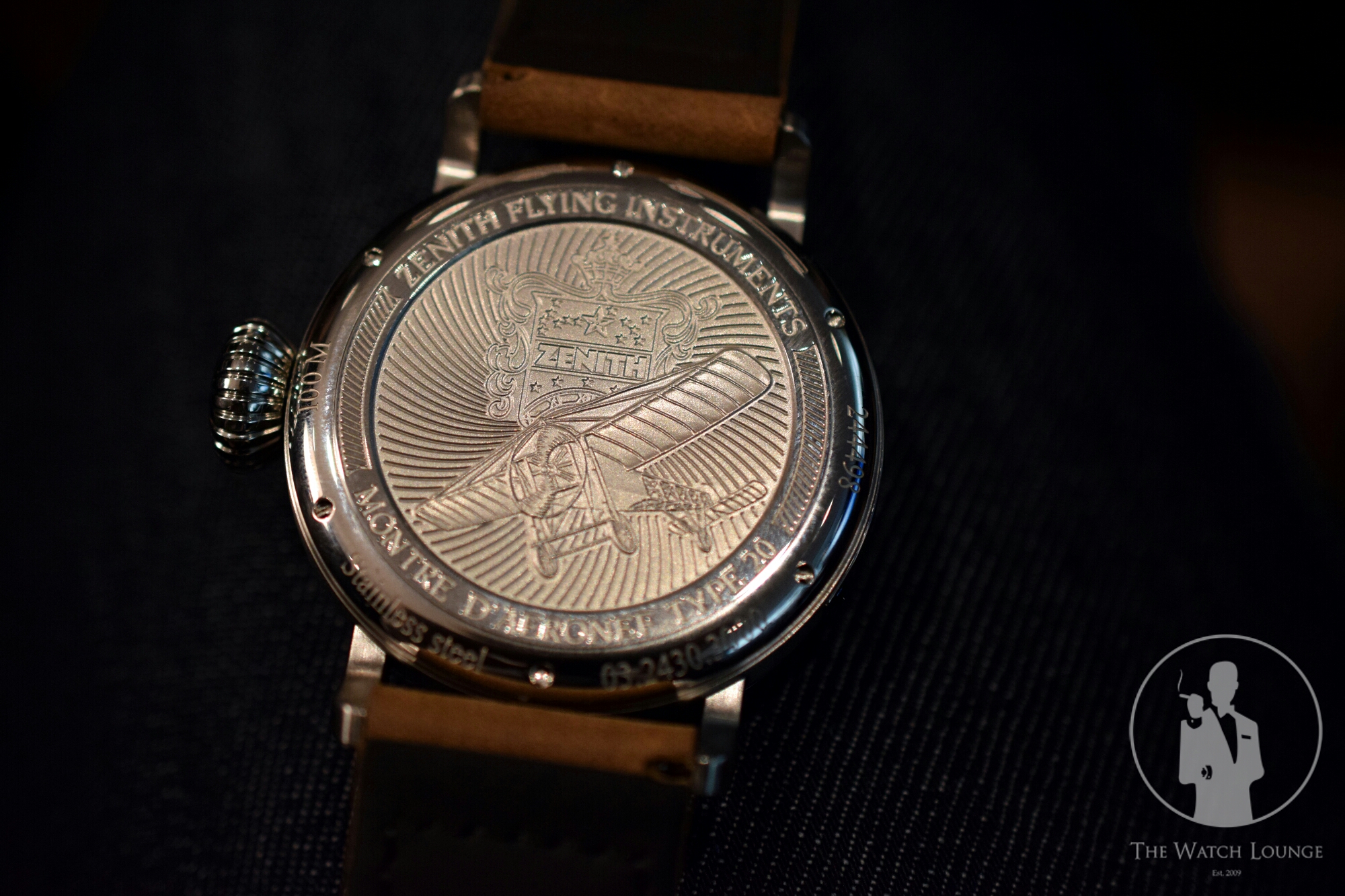
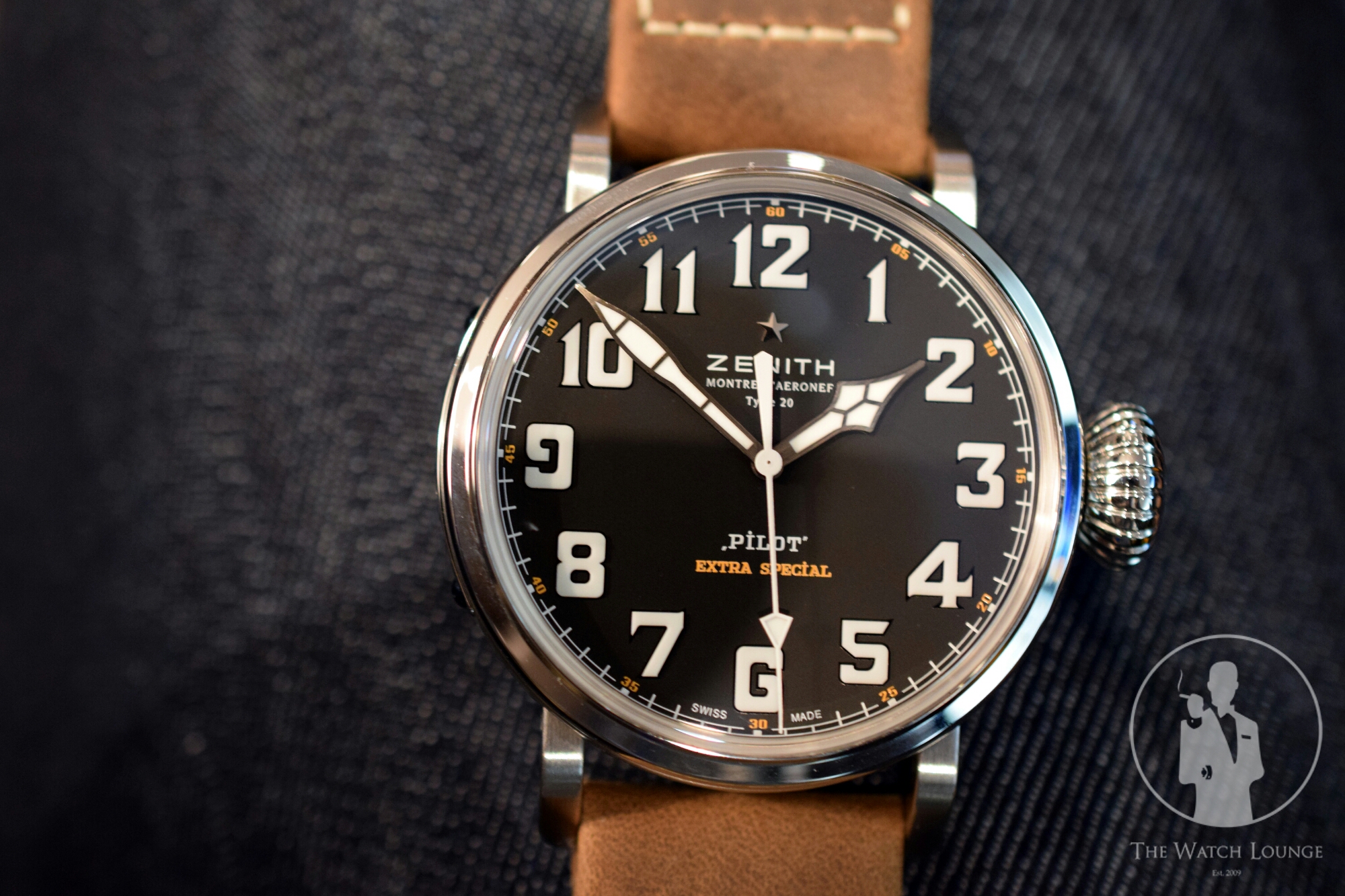
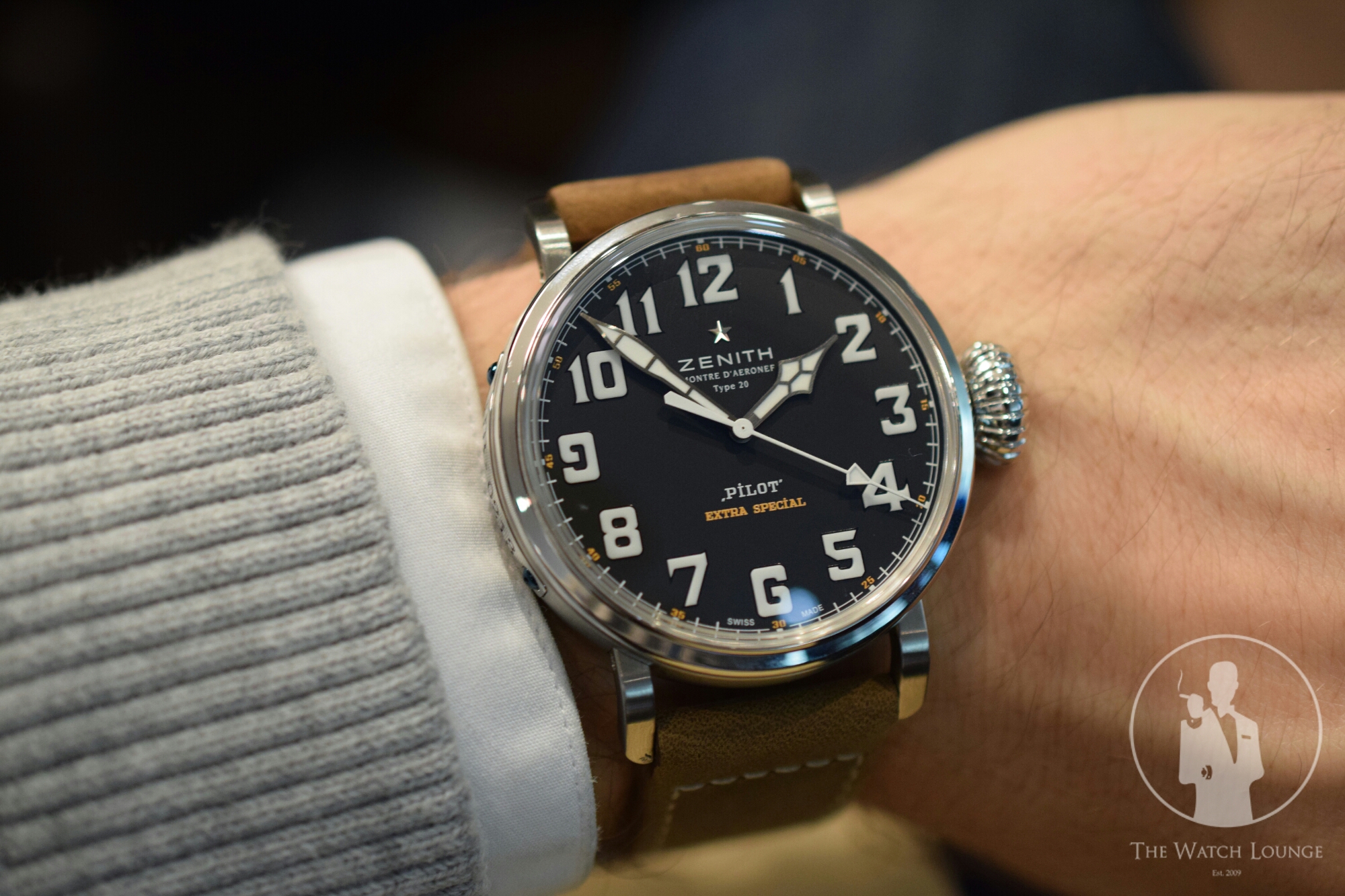
I like it, 5400 USD, better something like 10,200 USD for in house movement you don’t see with the caseback. My .02
Great looking watch.
I have this model and I am very happy with the watch, my question would be … how long was it in production and approximately how many units could have been manufactured?